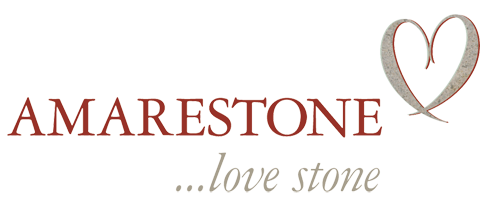Cutting and finishing large volumes of French limestone
On our blog, we often talk about different types of French limestone and the quarries they come from. But when your project requires large volumes of stone, you also need to look at the factories that cut and finish the stone. They are a vitally important part of the process and we thought we should highlight what to look for and why.
For major projects that use French limestone, it goes without saying that the stone must suit the technical and aesthetic requirements of the project. It has to look right and be able to perform well in the environment. But there are other considerations that could have an impact on the larger projects.
 Cutting blocks of Tuffeau French limestone for masonry projects
Cutting blocks of Tuffeau French limestone for masonry projects
Quarry Capacity
For the very large projects requiring large volumes of stone, it is important to know that the quarry has enough raw material in the quarry to fulfill the requirement and that it can be extracted in the necessary timescales. The size of the "bench" (i.e. seam or layer) of the chosen stone should also be taken into account. Each bench of stone can have very different characteristics and they are not necessarily interchangeable. The technical qualities of each bench may be different as well as the aesthetic qualities.
 Chauvigny Quarry - "Gold" bench above and "White" bench beneath our feet
Chauvigny Quarry - "Gold" bench above and "White" bench beneath our feet
Quarry Bench Height
The bench or bed height is a further consideration. Some benches are just a few centimetres thick and some are several metres thick. Stonemasons will recognise this as an important factor when choosing stone for larger structural pieces, such as supporting columns. Generally, stone is stronger and less compressable when it is installed the same way up as it lies in the bed. For example, a tall bed height means that you could have a tall structural column in a single piece of stone instead of several smaller pieces.
Factory Machinery
Most of the companies that own quarries also own a factory where the excavated raw stone blocks are cut and processed. The equipment in the factory is often determined by the use that the stone is usually put to. For example, if the stone is particularly suited to flooring, then the company will probably have invested in a tile line machine specifically to cut and finish floor tiles. Or, if the stone is great for carving and monumental pieces, they will more likely be focussed on cutting "6 sides sawn" blocks for the stonemasonry market.
The question here is; does the factory have an adequate number of machines of the right type to keep up with the required production rate or would it have an impact on the project's critical path timeline?
In order to produce cut to size sculpted pieces, e.g. fluted columns or coping stones, the raw block would be cut "6 sides sawn" on a block cutter and then moved onto a CNC machine or perhaps a stone lathe. After that, it may be finished by hand. Does the factory have enough block cutters or enough CNC machines and then enough masons to complete the work within the required project timescales?

In the small image here, you can see the curved finished pieces that were cut by the CNC wire saw in the larger photo below. To meet the production deadline, the raw blocks were first cut to size by several block cutters before being shaped by one of the 3 wire saws (see below). They were then cut to width and length by a further set of block cutters before being honed by hand and then packed and wrapped ready for despatch.
 One of three CNC Wire Saws cutting curved slabs of French Limestone for a major project
One of three CNC Wire Saws cutting curved slabs of French Limestone for a major project
The whole production process should be considered when planning large scale projects and it is worth ensuring that the quarry company already has experience of such projects.
Our French partners include the largest limestone quarry companies in France and they have supplied limestone to some of the world's greatest natural stone projects. French limestone from these quarries can be seen all around the world, including the UK and London.

Chamesson French Limestone cladding on the Doha Museum in Qatar
If you think French limestone could be suitable for your project, please get in touch and we will help you identify the right stone, the right quarry and the right factory to meet your project requirements.
Visit the French Quarry and Factory
A visit to the quarries and the factories is the best way to fully understand the whole process. We believe it is a key element in choosing the most appropriate French limestone for large scale projects.

